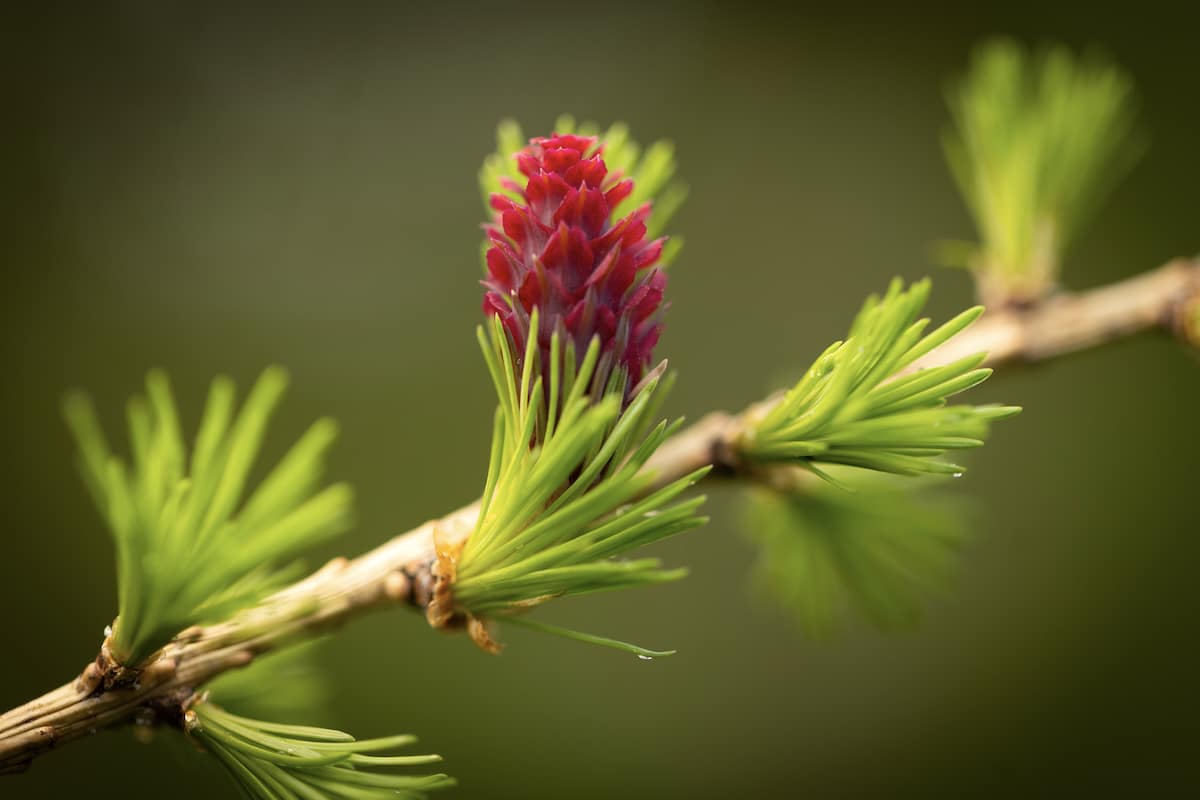Ecowatch
45% of Earth’s Known Flowering Plants Could Become Extinct, Including Orchids and Pineapple

Buds burst on a European larch (Larix decidua) at Kew Gardens in London, England on March 30, 2023. Dan Kitwood / Getty Images
Founded in 2005 as an Ohio-based environmental newspaper, EcoWatch is a digital platform dedicated to publishing quality, science-based content on environmental issues, causes, and solutions.
A new State of the World’s Plant and Fungi report from Royal Botanic Gardens, Kew (RBG Kew), presents the current conditions of Earth’s plants and fungi.
Based on more than 25 scientific papers and the work of 200 researchers from around the world, the report looks at global biodiversity patterns and drivers, as well as identifies crucial knowledge gaps and ways to tackle them, a press release from RBG Kew said.
One of the main findings of the study was that 45 percent of the flowering plants on Earth could face extinction, including pineapple, orchids and many important crop species.
“Our fifth edition of RBG Kew’s State of the World’s Plants and Fungi focuses on the latest knowledge on the diversity and geographic distribution of plants and fungi. It relies on two major advances. Firstly, the recent release of the first geographically complete World Checklist of Vascular Plants – a landmark achievement after more than 35 years of meticulous and highly collaborative work. Secondly, the wealth of information on fungal diversity newly harnessed from the analyses of environmental DNA in soil samples across the world, integrated with other morphological and molecular evidence from fungarium specimens,” said professor Alexandre Antonelli, director of science at RBG Kew, in the press release.
Fungi and plants are essential to the functioning of ecosystems that provide humans with medicine, food, raw materials and clothing.
“When we consider that nine out of ten of our medicines come from our plants, what we are potentially staring down the barrel at is losing half of all of our future medicines,” said Dr. Matilda Brown, RBG Kew conservation specialist, as BBC News reported. “Every species we lose is a species that we don’t know what opportunities we’re losing… It could be a cancer fighting drug, it could be the solution to hunger… And so to lose that, before we get a chance to study it would be a tragedy.”
There are around 350,000 vascular plant species that have been identified, but as many as 100,000 have yet to be officially named, the press release said. According to new estimates, it is likely that as many as three out of four of these undescribed species are already under threat of extinction.
“My personal observation is that the number of threatened plants has increased shockingly in recent years,” said Dr. Martin Cheek, senior research leader in accelerated taxonomy at RBG Kew, in the press release. “When I started out as a taxonomist 30 years ago, you wouldn’t even consider that a species you were publishing might go extinct; you just assumed it was going to still be around in the wild.”
Researchers made the discovery after analyzing the International Union for Conservation of Nature (IUCN) Red List of Threatened Species, along with World Checklist of Vascular Plants (WCVP) data to find links between the year a species of plant is formally described and its risk of extinction.
The scientists discovered a clear link between the description year and extinction risk. More than 77 percent of the described species from 2020 met the criteria to be evaluated as threatened.
They also round that the more recently described species were more likely to fit into a higher threat category. In 2020, more than 59 percent of the species described were likely to meet the Endangered criteria, while 24.4 percent were likely to meet the Critically Endangered criteria.
Because of these startling findings, scientists at Kew are asking that all newly described species be treated as if they have already been assessed as threatened unless there is proof otherwise. More and more of these species are experiencing habitat or population decline and have narrow ranges.
Scientists feel that prioritizing them for full IUCN Red List assessments will help conservation efforts.
“Ideally, partnerships between taxonomists and experienced conservation assessors would aim to describe and assess species simultaneously, to maximise opportunities for effective conservation action. In the meantime, if accepted, our recommendation could aid in the protection of many tens of thousands of undescribed threatened species, by treating them as threatened as soon as they become known to us,” Brown said in the press release.
Scientists hope conservation efforts and policymakers will be guided by the new findings.
“We hope that these findings can be used to say, ‘These are the species that are predicted threatened and haven’t been assessed yet, and we are confident that they are good predictions, so we think that these should be priorities for full Red-Listing,’” said Dr. Steven Bachman, research leader in species conservation at RBG Kew, in the press release. “Then either we develop a project to assess these species or we encourage other people to carry out these assessments.”
Subscribe to get exclusive updates in our daily newsletter!
By signing up, you agree to the Terms of Use and Privacy Policy & to receive electronic communications from EcoWatch Media Group, which may include marketing promotions, advertisements and sponsored content.
Disclaimer: No copyright infringement intended. All rights and credits reserved to respective owner(s).












